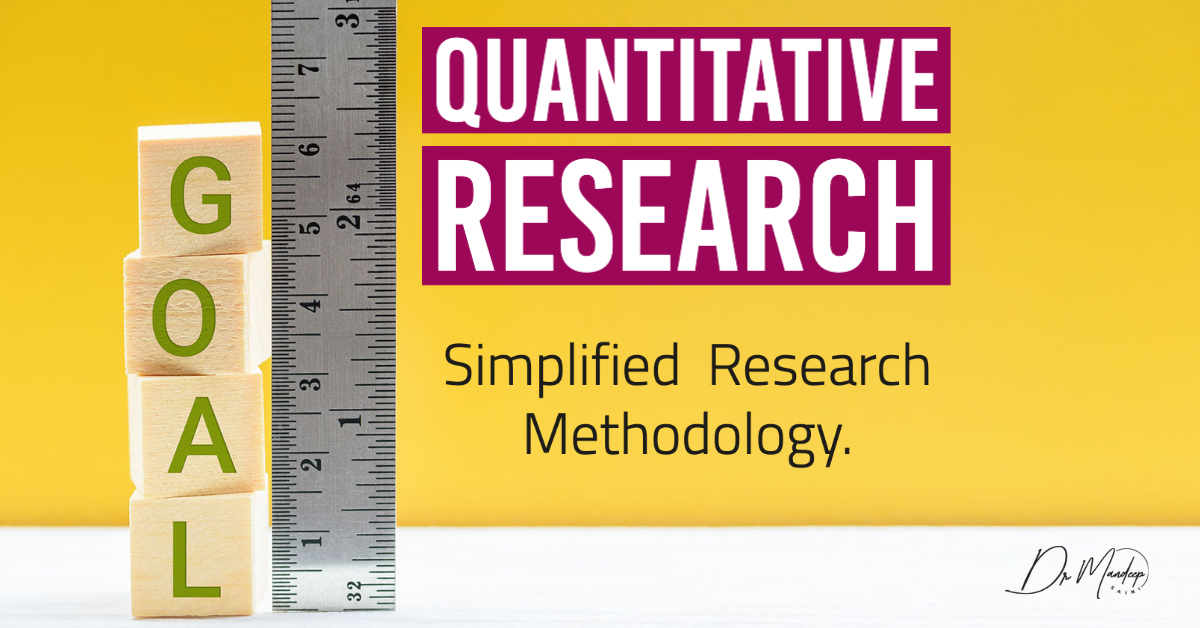What is Quantitative?
Qualitative is- expressible as quantity and capable of measurement of quantity. Quantitative- measurement is assigning numbers to a process through general conscious awareness rather by intuition or reasoning. Quantitative analysis involves numbers and measurements. A few examples of quantitative data are
- The temperature is 30° degrees Celsius.
- Adam has 3 T-shirts.
- The average mileage of my car is 52 miles per gallon.
- The capacity of the washing machine is eight litres.
- 45 percent of students fail research projects due to ineffective planning.
A quantitative approach to research is likely to be associated with a Deductive Approach to testing theory, often using some facts. Quantitative research involves asking how much or how many. That focuses on numbers, not words. Questionnaire surveys are widely used for collecting quantitative data to measure the quantity. Quantitative data focuses on testing a theory that aims to verify the point-of-view of the researcher through accurate statistical analysis. Quantitative is a structured approach to gathering reliable data for generalisation and hypothesis testing. Quantitative is the most relevant, outcome-oriented statistical analysis approach for large sample sizes.
For instance– You found “about 40 percent of the construction firms expressed that the delay occurs due to the late payments”. That gives you a theory that “the contribution of the late payments is Very High for delays in building projects”. This statement needs measuring to identify general conscious awareness.
To measure this statement, you asked the below question to Project Managers in building projects.
Question- What is the level of contribution of the late payments that cause a delay in the projects?
In this question, you are asking Project Managers to represent their understanding of the level of contribution in numbers so that it can be used to measure. There can be many ways to get the answer to this question. This example uses a Likert scale. The Likert scale is a scale that is used to capture people’s attitudes on a topic. In this case, attitude means the understanding of Project Managers. Below, Table 1 exemplifies the main question, the theory- that needs testing, and the ranking of the Likert scale. The ranking is kept from Very Low contribution to Very High contribution. However, the question can be asked in many ways, such as- to measure the agreement, occurrence, importance, etc., depending on how you want to measure it.
Table 1: Example of Question to Collect Quantitative Data
| Main Question | What is the level of contribution of the late payments that cause a delay in the building projects? | ||||
| Hypothesis/Theory | The contribution of the late payments is Very High for delays within the building projects. | ||||
| Likert Scale | Very Low | Low | Moderate | High | Very High |
| Ranking | 1 | 2 | 3 | 4 | 5 |
Let’s assume- 10 respondents have answered your question. Below Table 2 represents the answers from those surveyed. The respondents highlighted their answers in red.
Table 2: Example of Data Collected for Quantitative Analysis
| Likert Scale | Very Low | Low | Moderate | High | Very High |
| Respondent 1 | – | – | – | – | |
| Respondent 2 | – | – | – | | – |
| Respondent 3 | – | – | – | – | |
| Respondent 4 | – | – | | – | – |
| Respondent 5 | | – | – | – | – |
| Respondent 6 | – | – | – | | – |
| Respondent 7 | – | – | – | – | |
| Respondent 8 | – | – | – | – | |
| Respondent 9 | – | – | | – | – |
| Respondent 10 | – | – | – | – | |
| Total | 1 | 0 | 2 | 2 | 5 |
Now, you can test your theory (given in Table 1) through the quantitative data in Table 2.
In a simple example – the data reveals that five out of ten (50%) respondents expressed that “the contribution of the late payments is Very High for delays in building projects”. Data proves that your theory is true and that can be carried forward for general discuss the general conscious awareness.
Subscribe for more posts like this
-

Part-time jobs for international students in the UK
Part-time jobs for international students in the UK: Know the basics Read more
-

4 Simple Tips for Critical Literature Review at Masters Level
Learn with videos: Writing a Critical Literature Review at the masters level for Assessment Report and Dissertation is essential. Read more





2 Comments
[…] & Quantitative […]
[…] contemporary research, the importance of quantitative methods cannot be overstated. However, the role of research philosophy in qualitative research is often […]
Comments are closed.